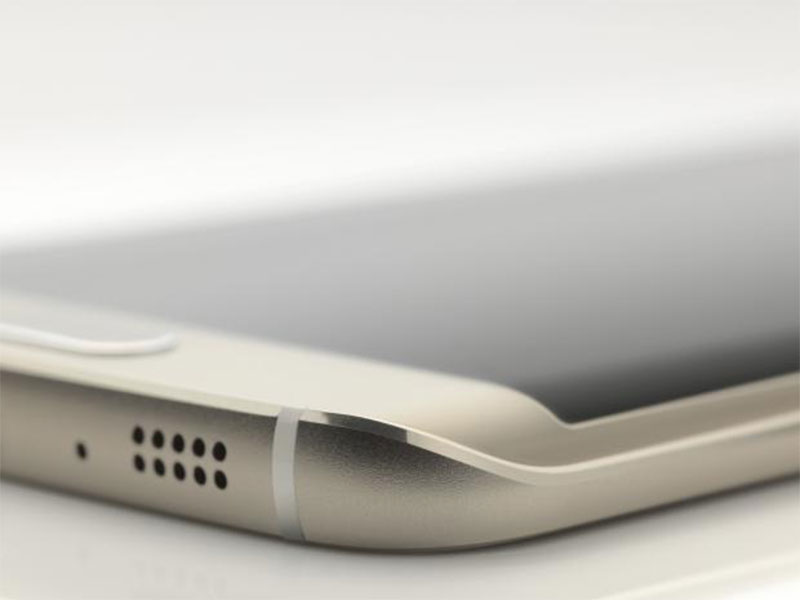Samsung Galaxy S6 And S6 Edge
It’s actually pretty difficult to imagine a more important smartphone launch in recent history than the Galaxy S6.
Important in the sense that it was absolutely vital for the manufacturer in question, Samsung, to not only get it right, but to absolutely knock it out of the park. As always, there was the usual pressure created by months of hype, rumour-mongering, and the rabid, eager anticipation of millions of Samsung fans, but on top of that you had the fact that Samsung handsets have been a bit disappointing for a while now AND, most crucially of all, the Galaxy S5, the last shot at this, was pretty much a flop. It failed to capture consumers’ imaginations, and did not sell too well at all.
So Samsung knew this time round it needed a BIG hit with the Galaxy S6 and Galaxy S6 EDGE –– anything less would’ve been a disaster with dire consequences for the Galaxy S brand and Samsung’s bottom line in 2015.
Samsung believes the Galaxy S6 and Galaxy S6 Edge will set new sales records following its arrival in store shelves on Friday 10 April. Analyst predictions place shipped units at a possible high of 55 million.
It’s thought there could be some adverse side-effects, however, as it’s believed demand may exceed supply of the Galaxy S6 Edge. Samsung is reportedly trying to manufacture enough curved displays to meet expected demand, according to comments made by co-chief exec Shin Jong Kyun, but it is a more complicated process than conventional flat displays.
While both the Galaxy S6 and S6 EDGE are beautiful in their own right, after holding both in my hand its clear the fan favorite is going to be the S6 EDGE. Its dual sided curved display is breathtaking to behold. The way the glass wraps on either side just gives it a stunning look simply not encountered elsewhere, and one that makes you feel like the display itself melds seamlessly into the metal frame.
Apple usually gets all the praise for its focus on design and the painstaking attention it pays to every aspect of its hardware. But these new devices from Samsung really are stunningly beautiful, more so than both the iPhone 6 and iPhone 6 Plus. Nothing else has looked this exciting since, well, probably the iPhone 4 or HTC’s first One handset. The Galaxy S6 and Galaxy S6 EDGE really are that good. Samsung should be very proud of its design team this time around.
Of course I’m still not sold on the usefulness of the “EDGE” part of the display besides aesthetics. The only useful feature Samsung showed off was that it’s now easy to see who is calling you when your phone is face-down: you can pre-program up to five colors representing five different people in your contacts. The screen’s EDGEs will glow their color when they call.
Basically, A LOT was riding on the Galaxy S6 and Galaxy S6 EDGE. Fortunately, Samsung did an excellent job on both the handsets and produced two of the best smartphones ever created. I left MWC with an idea about what the Galaxy S6 entailed, what it promised. But it would be a good couple of months before I could truly see what the handset was capable of and whether it was worth the wait after all…
I do like Samsung phones, especially the Note 4. But I haven’t been taken with any of its Galaxy S handsets since, well, the Galaxy S2. That handset for me was the last time Samsung really pushed the boat out with its Galaxy S line –– and that was a good long while ago. Since then the company seemed to be too focused on gimmicks and trying to make money through useless bloatware on its devices.
Samsung promised to undo all of this with the release of the Galaxy S6. No more useless bloatware. No more pointless animations. No more crap. Just useful applications, a stripped down UX and a renewed focus on design, build materials and imaging –– the cornerstone of any truly great handset.
But did Samsung make good on its promises? Am I now ready to ditch my iPhone 6 Plus for the Samsung Galaxy S6? All of these questions and more will be answered below. Right, let’s crack on!
Samsung is one of the world’s most popular brands, next to Apple and Google. But the thing about Samsung is that it didn’t really get there on merit –– it sort of bought its way in with INSANE levels of spending on marketing and advertising (reportedly $12 billion in 2012). It has always made excellent handsets, a prime example would be the Galaxy Note which gave birth to the whole phablet scene, but more recently it has fallen on tough times (sales dropped, the Galaxy S5 flopped) because people got sick of the company drumming out the same old crap year after year.
And then something happened in late 2014…
Samsung began to pump out great looking handsets. The Galaxy Note 4 was, of course, brilliant –– Note updates always are. But for me it was the Galaxy Alpha that really showed a change in the way Samsung built and designed phones; it was just stunning to behold. For this reason, I began (for the first time in a very long while) to actually get excited about the prospect of a new Galaxy S flagship.
The Galaxy S6 takes everything that was great about the Alpha, its gorgeous shape, sleek profile and excellent contouring, and takes it several steps further. The result is a brilliantly realised handset that sits perfectly in your hand and pocket. The Galaxy S6 is a goldilocks handset if ever there was one, being just the right size. Handy if phablets aren’t your thing and you want a phone with the very best specs and hardware currently available.
The Galaxy S6 is available in four, very fetching colour schemes: White Pearl, Gold Platinum, Blue Topaz and Black Sapphire. The handset itself is also exceptionally thin at 6.8mm and super light too, pushing the scales at just 138g. For me, this handset represents the perfect compromise between modern, phablet-sized handsets like the Nexus 6 and iPhone 6 Plus and more traditionally sized units like the HTC One M9, iPhone 6 and Moto X. But in an odd twist of fate, Samsung now makes the best looking handset on market; not even the HTC One M9 or iPhone 6 can hold a candle to this baby. It truly is stunning and then some, as the saying goes.
This isn’t a deal-breaker for me, if I’m honest. I don’t use cards and I never carry a spare battery around with me. But I do get why some users may be a little cheesed off about this switcharoo; nobody likes building up year’s worth of media on cards and then not being able to use them on their shiny, brand new handset.
Samsung Galaxy S6 Review: Display
I’ve been pretty vocal about my disdain for QHD panels in recent months and the main reason for this was battery life ; QHD panels simple require too much power and, as a result, need HUGE battery cells to run them which in turn require a huge chassis to house them. Hence every QHD phone to date being a phablet.
The screen itself is stunning. There really is no other word for it. This is the best screen I have ever used. Period. Everything looks wonderfully vibrant; colours are precise, yet pop right off the display; TouchWiz looks sublime, almost like paper; detail is off the charts; videos look immense; NOTHING has been left to chance here. The panel itself surpasses even the Galaxy Note 4’s impressive QHD setup, paying testament to just how much effort and resources Samsung puts into making its displays. I really cannot say enough good things about this panel, so I’ll simply relay to you its pertinent details: the Galaxy S6 uses a 5.1in Quad HD Super AMOLED display with a resolution of 1,440 x 2,560 and a pixel density of 576ppi.
Samsung Galaxy S6 Review: TouchWiz and Operating System
The Galaxy S6 is of course running Android Lollipop out the box and benefits from all of its excellent and well executed optimisations and tweaks. Most Android handsets these days run pretty damn smoothly, but it is clear some firms –– notably HTC and Samsung –– are better at tying their software in with Google’s world-beating mobile OS. Sense and TouchWiz are both liquid-smooth these days, running with the same level of performance that was once usually only reserved for iPhones.
I recently tested the HTC One M9 and found it rather lacking as an upgrade from last year’s model. Part of the reason for this was because I just couldn’t find anything to really get excited about, but the Samsung Galaxy S6 is the EXACT opposite; there is almost too much going on here –– everything has been tweaked and upgraded, so much so the experience of using it feels completely different from last year’s model, which is exactly how a flagship experience should feel.
Samsung has also done A LOT of work to TouchWiz. It still looks bloody awful, mind, but the software runs smoother than ever and the multitasking carousal is off the charts –– it is insanely fast, unlike anything else I’ve experienced this year in the Android space. This “lean-down” has been a long time coming, however, so while I am glad Samsung has FINALLY listened to its customers, I’m also sort of peeved that it took this long to happen!
By and large, though, the torrent of crap that we once knew as TouchWiz is a far more subtle and useful beast these days, almost as if it’s grownup from an annoying teenager into a lovely, well-rounded 20-something. The software itself takes up less room on your device, is less intrusive and –– best of all –– it doesn’t constantly ask you to sign in to Samsung Apps or to start tilting the device to read webpages, which I might add was one of the worse ideas EVER devised for a phone.
Now, if Samsung could finally get around to making it look a bit less rubbish…
Samsung Galaxy S6 Review: Specs –– CPU, RAM, GPU and Storage
Like everything else in this handset, Samsung has pulled zero punches when it comes to the Galaxy S6’s power unit. Inside you’ll find the insanely powerful, 64-bit 14nm OctaCore Exynos 7420 CPU running alongside 3GB of RAM and a Mali-T760 GPU. As you’d expect the results of all this grunt are pretty startling and I’m willing to wager this handset is the most powerful smartphone ever created.
That Exynos 7420, which comprises twin quad-core CPUs (one running at a frequency of 2.1GHz and one at 1.5GHz), will devour everything and anything you can throw at it. TouchWiz runs smoother than ever before, intensive games run without a hiccup and even things like photo and video editing are taken well inside the Exynos’ stride. Benchmarks tell a similar story, though we won’t bore you with those, as the performance on show here requires zero pomp or ceremony; nothing else in the Android space comes close to what’s going on inside this handset. No wonder Qualcomm is getting Samsung to build its next-generation Snapdragon 820!
Beyond this the most impressive thing about the Galaxy S6 is just how reserved it is; the handset doesn’t feel showy. It just does what it does in a very satisfying and efficient manner. Yes, the omission of SD-support is a pain, but the handset is outfitted in three storage versions (32/64/128GB) alongside 100GB of free Drive storage, so even those running on the lowest storage version should have more than enough space to play with.
The Galaxy S6 supports CAT 6 LTE, meaning 300 Mbits/sec download, 50 Mbits/sec upload, Wi-Fi 802.11ac (2×2 MIMO) and Bluetooth 4.0 as well as all the usual bells and whistles –– NFC, wireless charging, etc –– you’d expect on a top flight Android handset. Pound for pound, the Galaxy S6 offers up perhaps the best array of specs and hardware we’ve seen on a phone so far this year. All that could change with the launch of the LG G4 and Galaxy Note 5 later this year, obviously, but for now the Galaxy S6 really does look, feel and perform like a flagship in every sense of the word.
Samsung Galaxy S6 Review: Camera
Samsung, even back in the days of the Galaxy S4 and Galaxy S5, has a very good pedigree when it comes to imaging technology. The Galaxy Note 3’s imaging unit was exceptional. Ditto for the Galaxy Alpha and Galaxy Note 4, so it’s no surprise the imaging aboard the Galaxy S6 is yet another step forward for the company.
This isn’t a dramatic overhaul of what came before; rather, it is a refinement (a la Apple’s style with the iPhone) of what came before, aboard the Galaxy S5, just with a few key tweaks in the exact right places. You have the same 16MP sensor onboard, for instance, only this time it is backed up by Optical Image Stabilisation and a wider aperture which allows for more light and, in the end, better shots regardless of the setting you’re shooting in.
The addition of Live HDR, the quick launch mode, accessed via a double tap of the home button, an improved 5MP front facing camera with an aperture of f/1.9, and Samsung’s already awesome, but now simpler camera application make for a thoroughly satisfying user experience.
Video, again, is very decent and benefits from an array of new features like object-tracking auto-focus, a first on a smartphone in my experience, as well as having the chops to shoot crystal clear 4K video, 1080p, and lower. The only downside to this new mode is that it cannot be used in conjunction with OIS…
KYM’s go-to recommendation for the best imaging experience on offer always used to be the Galaxy Note 4. Pound for pound, nothing else really equaled that handset for ease of use, features and picture quality. However, there’s a new sheriff in town these days, one with all the prowess and power of the Note 4 and quite a bit extra, and it goes by the name of the Samsung Galaxy S6.
It’ll be very interesting to see how the LG G4’s setup compares to what’s on offer aboard the Samsung Galaxy S6 and Galaxy S6 EDGE because as it stands right now –– early-Q2, 2015 –– Samsung is a good country mile or so ahead of the competition in this regard.
Samsung Galaxy S6 Review: Battery
QHD panels and battery performance do not go hand in hand; that’s been my position of them since day one. Every QHD device I’ve tested so far had a shocking battery life and struggled to get through a full day (and a night on the town) with heavy usage. The Galaxy S6 is the exception to the rule, however, as its battery –– a mere shrimp at just 2,550mAh –– just keeps on going and going and going. And even when it does want to conk out you can switch on Power Saving mode and eke out another full day’s worth of usage.
The only explanation I can think of is Samsung’s Exynos 7420 CPU; it must be a seriously efficient mother trucker. I never had to worry about the handset running out of juice, unlike with the HTC One M9, Google Nexus 6 and iPhone 6. Nope, not once –– this thing goes all day long. And, in the event you do manage to max it out, you have the Power Saving mode to save your ass and keep the phone’s vital systems running for upwards of 10 hours.
Couple this with the Galaxy S6’s rapid charging abilities –– it’ll go from dead to 70% in 30 minutes –– and you’re looking at one of the best performers in the business. Impressed is an understatement; Samsung has just proved you CAN do QHD without hurting the battery life detrimentally (providing, of course, you use an Exynos CPU).
Samsung Galaxy S6 Review: Verdict
Impressed. Very, very impressed. This is the handset Samsung fans have been waiting for… an actual contender that surpasses Apple’s iPhone in almost every regard.
Samsung might have made some erroneous mistakes in the past but all is forgiven now because the Galaxy S6 is easily one of the finest handsets I’ve ever tested. It’s great at imaging. It performs great. It looks great. Hell, it’s even got a decent battery life AND a QHD display.
The only thing it’s missing is microSD and the ability to remove its battery –– that’s literally it. And if you’re bothered about that, well, just go and get the Galaxy S5 because I don’t think Samsung will miss your business.










